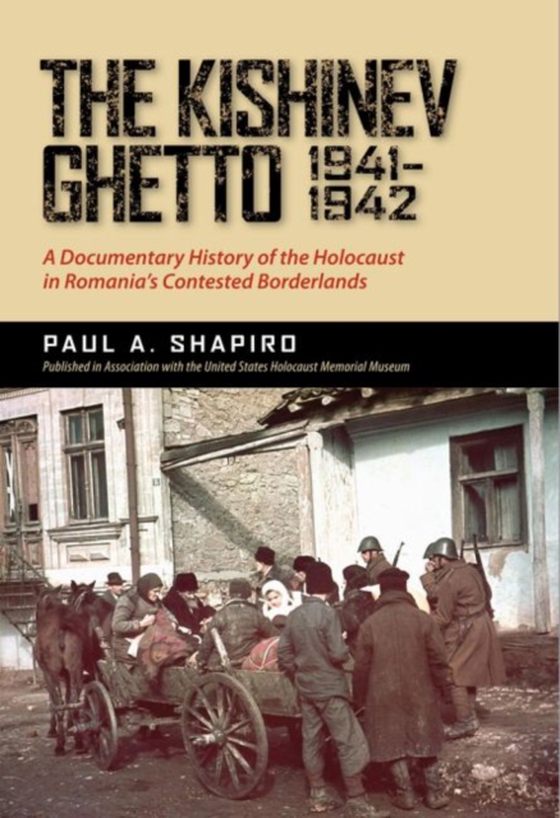
Kishinev Ghetto, 1941-1942 e-bog
546,06 DKK
(ekskl. moms 436,85 DKK)
The Kishinev Ghetto, 1941-1942 offers a wealth of primary sources and insightful commentary about the little-known slaughter of Jewish residents of Kishinev (Chisinau) under the military occupation by Romania under Marshal Ion Antonescu, a Hitler ally.The Kishinev Ghetto, 1941-1942 sheds new light on the little-known historical events surrounding the creation, administration, and liquidation of...
E-bog
546,06 DKK
Forlag
University Alabama Press
Udgivet
15 september 2015
Længde
224 sider
Genrer
1DVWR
Sprog
English
Format
epub
Beskyttelse
LCP
ISBN
9780817388126
The Kishinev Ghetto, 1941-1942 offers a wealth of primary sources and insightful commentary about the little-known slaughter of Jewish residents of Kishinev (Chisinau) under the military occupation by Romania under Marshal Ion Antonescu, a Hitler ally.The Kishinev Ghetto, 1941-1942 sheds new light on the little-known historical events surrounding the creation, administration, and liquidation of the Kishinev (Chisinau) ghetto during the first months following the Axis attack on the Soviet Union (Operation Barbarossa) in late June 1941. Mass killings during the combined Romanian-German drive toward Kishinev in Bessarabia, after a year of Soviet rule in this Romanian border province, were followed by the shooting of thousands of Jews on the streets of the city during the first days of reestablished Romanian administration. Survivors were driven into a ghetto, persecuted, and liquidated by year's end. The Kishinev Ghetto, 1941-1942 is the first major study of these events. Often overshadowed by events in Germany and Poland, the history of the Holocaust in Romania, including what took place in Bessarabia (corresponding in large part with the territory of the modern Republic of Moldova), was obscured during decades of communist rule by denial and by policies that blocked access to wartime documentation. This book is the result of a lengthy research project that began with Paul A. Shapiro's missions to Romania for the United States Holocaust Memorial Museum to negotiate access to these documents. The volume includes:nbsp; A preface describing the origin of the project in the immediate aftermath of the Ceausescu regime in Romania.nbsp; A hundred-page study setting the events of the book within the historical context of Eastern European antisemitism, Romanian-Soviet conflict over control of Bessarabia, and Romania's alliance with Nazi Germany.nbsp; A thoughtfully curated collection of archival documents linked to the study.nbsp; A chronology of related historical events.nbsp; Twenty-one black and white photographs and a map of the ghetto. Students and scholars of Holocaust history, Judaic studies, twentieth-century Eastern European history, Romania, Moldova, and historical Bessarabia will want to own this important, revealing volume. Published in association with the United States Holocaust Memorial Museum
 Dansk
Dansk

